Issue 60
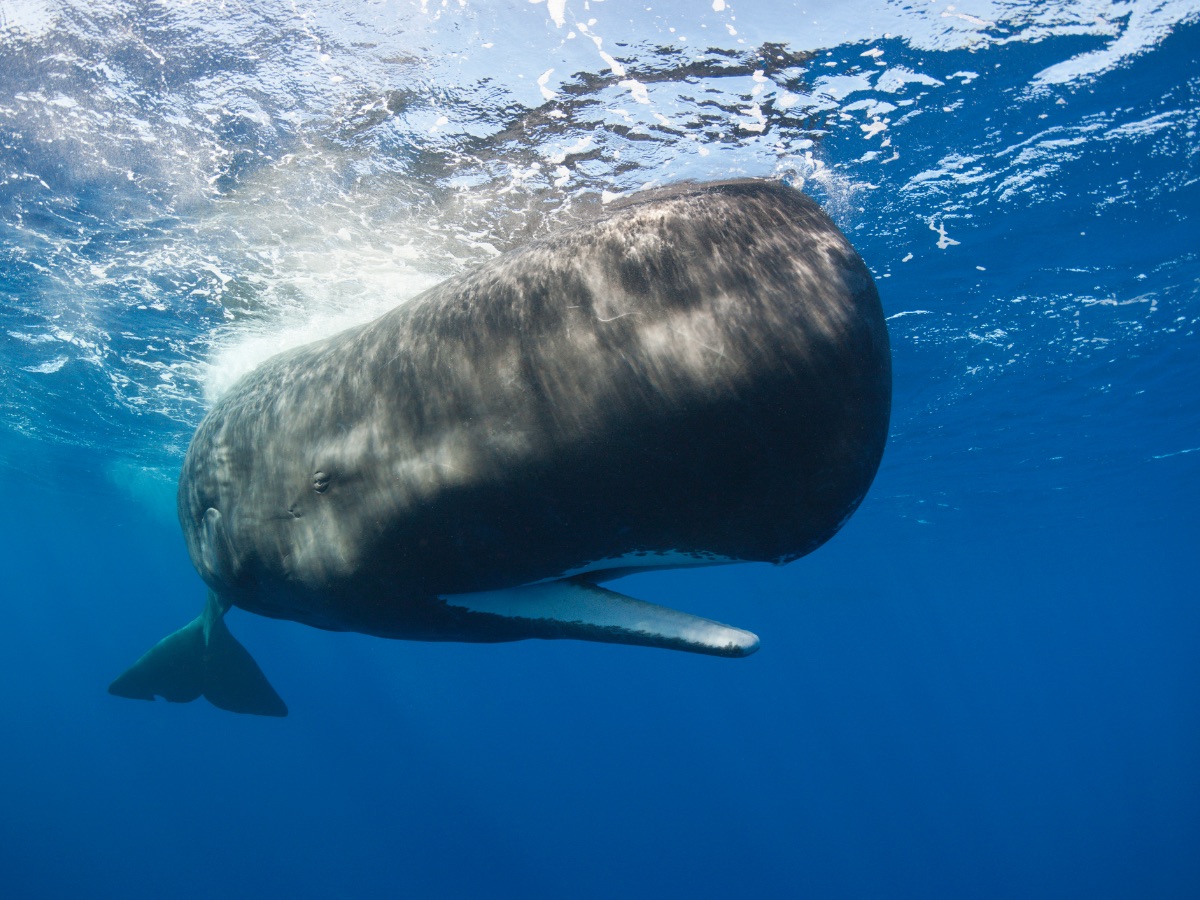
Sperm Whale (Physeter macrocephalus), Caribbean Sea, Dominica.
Reinhard Dirscherl via Getty Images Rachel Martin
Rachel Martin
Dominica launches the first marine reserve for sperm whales - Marine protected areas and marine reserves aim to provide long-term conservation of ocean resources, from specific habitats like coral reefs to underwater cultural heritage. The tiny island nation of Dominica just announced a new addition to this movement: the world’s first marine reserve specifically for sperm whales. The 788 square kilometer reserve aims to protect sperm whales belonging to the Eastern Caribbean Clan, which has fewer than 300 individuals remaining due to human-caused threats like boat strikes, entanglement, and tourism. The reserve will implement regulations that allow for sustainable, traditional fishing methods but with greater regulation of vessel traffic and tourism. “The 200 or so sperm whales that call our sea home are prized citizens of Dominica,” said Prime Minister Roosevelt Skerrit. “Their ancestors likely inhabited Dominica before humans arrived. We want to ensure these majestic and highly intelligent animals are safe from harm and continue keeping our waters and our climate healthy.” To learn more, see our Marine Protected Areas Nexus.

|
|
Magnificent Frigatebirds with chick on Redonda Island. |
 Scott Hannan
Scott Hannan
Caribbean island rewilding project is a rapid success - The once abandoned Caribbean island of Redonda, part of Antigua and Barbuda, has been transformed into a biodiverse haven for plant and animal species. The island was mined for guano in the early 20th century, and when the miners left, the island was infested with rats and feral goats, devastating the native landscape. After conservationists, led by Re:wild and Flora and Fauna International, removed the rats and goats, the island has seen a much more rapid regeneration than expected. Soil that had washed into the sea, damaging coral reefs and seaweed meadows, has stabilized with the flourishing of native flora, giving the reefs and meadows the conditions to recover on their own. Seabirds have returned, and the endangered ground dragon population has increased thirteenfold. While the conservationists are now considering reintroducing some native species, the majority of the restoration has been accomplished simply by restoring the conditions for the intelligence of the ecology of the island to rebalance itself. Check out this short YouTube video showing the rapid transformation of the island, and to learn more from us, see our Rewilding Nexus.
 Anna Steltenkamp
Anna Steltenkamp
Collaborative stewardship guides eco-cultural healing in Canada – The Canadian federal government signed a “first of its kind” deal with British Columbia and the First Nations Leadership Council to dedicate $1B to protect thirty percent of the lands and waterways within the province by 2030. David Eby, Premier of British Columbia, said the mission of the Tripartite Framework Agreement on Nature Conservation is “working together… to ensure we pass this natural inheritance on to our children and grandchildren.” The agreement seeks to support biodiversity conservation and ecological restoration and act as a meaningful step toward reconciliation and co-management with local First Nations. Leaders have prioritized ensuring its alignment with the UN Declaration on the Rights of Indigenous Peoples by collectively recognizing First Nations as the original stewards. Grand Chief Stewart Phillip emphasized that “respect for the inherent title and rights and legal orders of First Nations must be the foundation for any conservation initiative in our respective unceded and ancestral lands.” Might this agreement become a model for collaborative stewardship that considers how our shared landscapes are spaces in need of both ecological and cultural healing? This interwoven approach is essential because, as Robin Kimmerer wrote in Braiding Sweetgrass, “restoring land without restoring relationship is an empty exercise. It is relationship that will endure.”
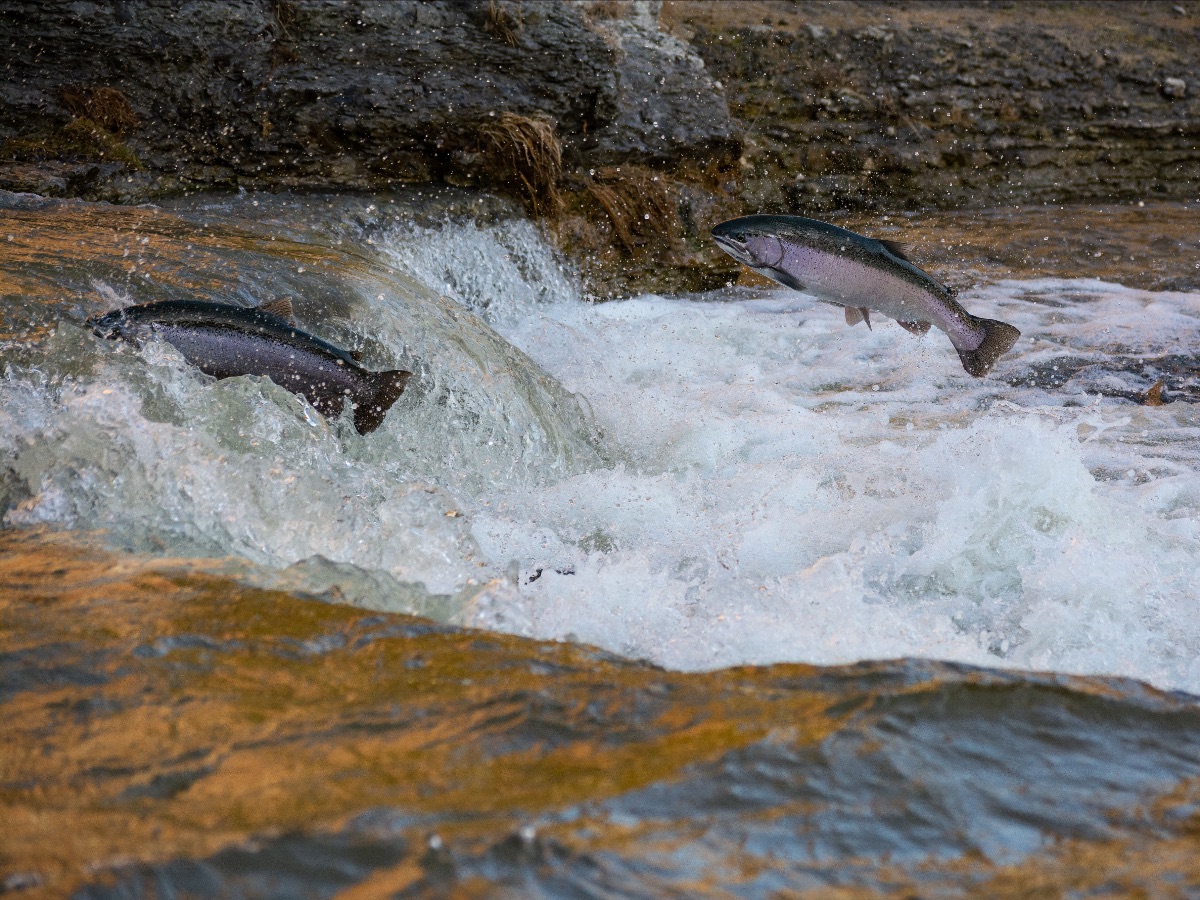
|
 Benjamin Felser
Benjamin Felser
AI, Salmon Fisheries, and First Nations in British Columbia - First Nations fisheries have joined forces with conservationists and computer scientists to pioneer an AI-based tool for salmon fishery stewardship. Despite general AI skepticism, witnessing this multi-party collaboration guided by First Nations inspired me profoundly. The AI tool can recognize and count 12 species of Pacific Northwest salmon, including the culturally and ecologically essential Coho and Sockeye salmon. Both crucial species are threatened by ongoing deforestation, warming waters, fisheries depletion, and poor monitoring. With 80% of BC’s streams under-monitored due to drastic cuts to research funding in the area, this AI-based tool promises to expand vital reconnaissance for salmon ecosystem stewardship. First Nations fisheries, including the Gitanyow and Skeena Fisheries, have been pivotal in shaping this tool. They constructed weirs to channel and record salmon flow, corrected times for monitoring of different species based on spawning and return dates, decided locations for monitoring and camera placement, and will be the ones to implement management changes based on the day-to-day data being received by the project. Similar projects are currently in the works in the Heiltsuk Nation. This project emphasizes the necessity of collaborative partnerships under indigenous guidance for salmon stewardship and broader work in rewilding. To learn more, see our Rewilding Nexus.
 Courtney White
Courtney White
Blue carbon is a regenerative climate solution – The Fifth National Climate Assessment, mandated by Congress and published last week by federal scientists, highlights practical solutions to the climate crisis that are already available- including blue carbon. The term refers to atmospheric carbon sequestered in marine and coastal environments, such as mangroves, tidal marshes, reefs, and seagrasses. It is analogous to ‘green’ carbon (soils and forests) with two big differences: it can trap carbon much faster and store it for longer. The key is protecting marine systems from harm and restoring degraded ones, exemplified by the work of global initiatives like the Reef Resilience Network. Blue carbon provides multiple co-benefits, such as ensuring food sources for local communities, building resilience against flooding, and protecting marine life. It has important implications for ocean policy. Carbon markets are increasingly trading blue carbon credits as a climate solution. However, alarms are being raised by scientists and others about the effectiveness of these credits, similar to recent criticism of the ‘green’ carbon marketplace. Credits aside, restoring and protecting blue carbon is a promising regenerative solution in an essential place: the oceans, which cover nearly three-quarters of the earth’s surface. See Mangroves Nexus, Seagrasses Nexus, and Tidal Salt Marshes Nexus.
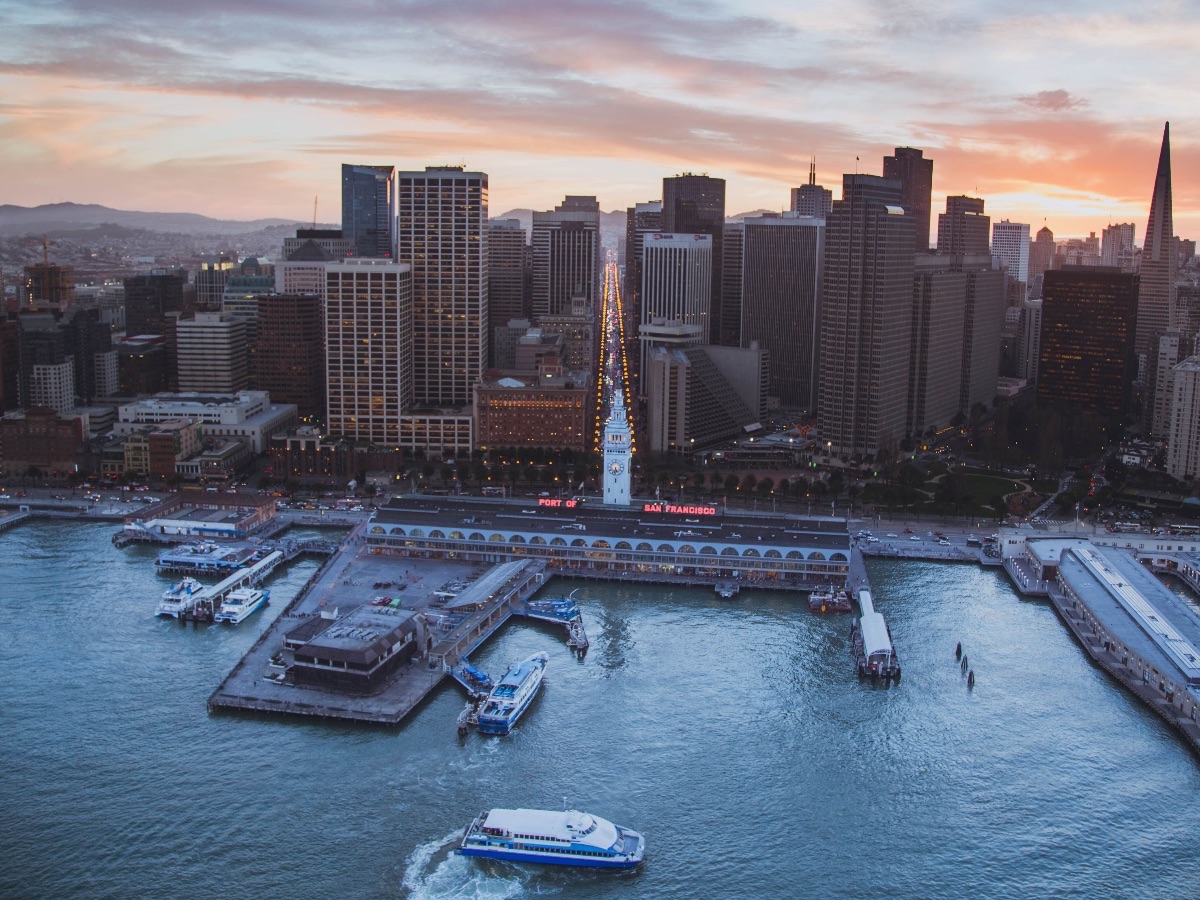
|
|
The iconic and mesmerizing Ferry Building of San Francisco.
Credit: Photo by Jared Erondu on Unsplash |
 Claire Krummenacher
Claire Krummenacher
The United States’ first hydrogen-powered ferry - Currently, the majority of the 800 ferries in operation across the United States rely on inefficient diesel engines that spew pollutants in proximity to densely populated communities. In California alone, ferries generate 11% of maritime particulate matter emissions despite comprising just 2% of commercial harbor craft, and implementing zero-emissions ferries could protect nearly 10 million Californians from high levels of air pollution, especially in predominantly Black communities. As a first step in that direction, Sea Change, the country’s first hydrogen-fueled ferry, is set to launch in San Francisco early next year as part of the city’s effort to shift half its fleet to zero-emissions technologies by 2035. Powered by fuel cells that combine hydrogen and oxygen to produce electricity, the ferry will only emit heat and water instead of the usual carbon dioxide and pollutants. Although the cells still use conventional hydrogen produced by fossil fuels, the goal is to shift to “green hydrogen” made from carbon-free electricity and water as soon as supplies allow. And while Sea Change is the only vessel of its kind for now, the startup behind it has already received $10 million to expand its fleet. For more information, see the Green Hydrogen or Urban Mobility Nexus.
 Amy Boyer
Amy Boyer
Earthshot supports Andean and urban forests - A grassroots community group called Acción Andina has just won the Protect and Restore Nature Earthshot Prize, which helps finalists scale up effective regenerative solutions in five categories. The Quechua grandparents of founder Constantino Aucca Chutas urged him to help farmers in Peru, where deforestation and glacier melt are creating a water crisis. He began an effort to replant a keystone tree called Polylepis, a species reduced to less than ten percent of its original range. Its benefits to high Andean forests include sheltering wildlife, building carbon-rich soil, and capturing water from high-altitude clouds. Indigenous communities are the stewards and replanters of these trees, and part of the work includes helping the communities secure title to their lands. Acción Andina is now a multi-country initiative working throughout the Andes. Another finalist for this prize, Freetown the Treetown, is also a skilled global cooperator: they are a C40 city, part of an urban network working locally to cut their emissions and build healthy, resilient communities. For Freetown, paying residents to plant, grow, and monitor trees is a critical strategy for managing erosion and flooding caused by deforestation—and their 80% tree survival rate is attracting further investment and interest in replicating their model. Learn more about these topics at our Keystone Species Nexus and Nature of Cities Nexus.
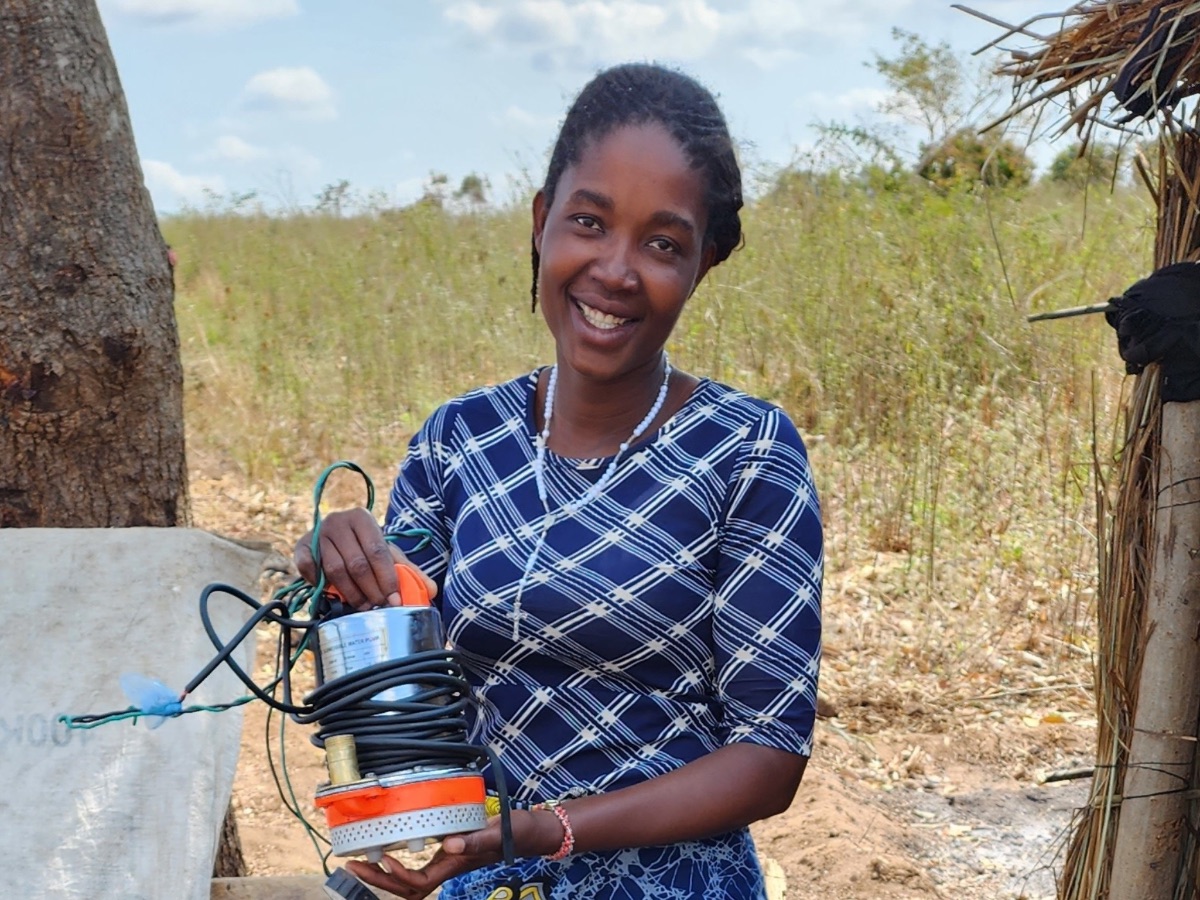
|
|
Agnes Makwale, chair of a five-women group, shares the pump she is holding along with a 50m hose and two solar panels. Image courtesy of solar4africa.org
|
 Jonathan Hawken
Jonathan Hawken
Growing crops in Africa with solar pumps - In Malawi, cultivating crops during the dry season presents a myriad of challenges. Approximately 95% of the annual precipitation occurs from November to April, resulting in prolonged periods of food scarcity for local communities and a twofold rise in food costs. Despite the availability of diesel irrigation pumps, the cost and environmental impact pose significant drawbacks. Over the last six months, 900 subsidized solar irrigation pump systems have been distributed through a network of sixteen women-led village solar shops. Comprised of a 48v pump, 50m hose, and two 100w solar panels, these systems not only enhance agricultural yield but also contribute significantly to the economic prosperity of adopters by enabling the cultivation of larger expanses of land. An examination of the impact of this solution on eight smallholder families revealed a remarkable average annual revenue increase of 48%, leveraging each donor dollar into an estimated $28 of villager income. The adoption of solar-driven innovations extends beyond irrigation pumps, with solar4africa.org emerging as a key player in initiatives such as solar-electric cooking, "forever" lights, and small solar cars.
 Juliana Birnbaum
Juliana Birnbaum
Portugal gives a glimpse into a clean energy future - The entire nation of Portugal ran on renewable power for six straight days at the start of this month, beating its previous streak and setting an example for grid decarbonization. Having committed to net-zero emissions in 2016, several years before the rest of the European Union, they closed their last coal plant last year and today generate about half of their power from wind and hydro. Worldwide, clean energy projects are currently attracting twice the investment capital of fossil fuels, whereas five years ago, it was an even split. Despite signs of the accelerating transition, many countries are still investing in fossil fuels, and to achieve compatibility with goals that would limit global warming to 1.5 degrees Celsius, a major U-turn is needed. Countries need to follow the lead of the Portuguese and phase out the use of unabated gas ten times faster (and coal ten times faster) than they are at present.
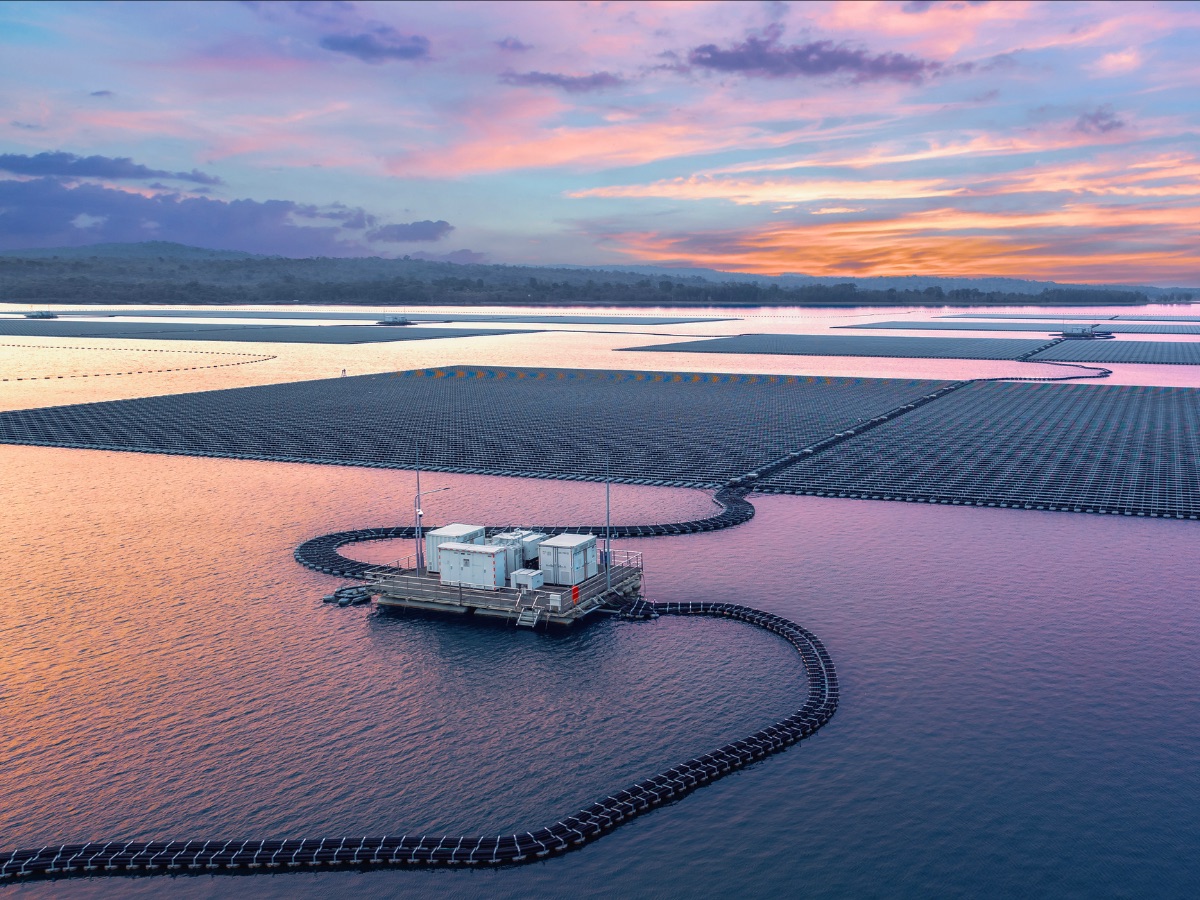
|
|
Hybrid floating solar cells at Sirindhorn Dam, Thailand.
Credit: anucha sirivisansuwan via Getty Images |
 Tim Treuer
Tim Treuer
An enormous floating solar farm comes online in Indonesia - The Indonesian island of Java is one of the most densely inhabited places on Earth, but it still found space to install a new 192 MW solar farm thanks to a little creative thinking. All 340,000 individual panels making up the facility are floating on top of the reservoir of the Cirata Dam, meaning their installation does not compete with farmland or native habitat for space. According to NASA, these ‘floatovoltaics’ have the added benefits: they stay cooler and thus run more efficiently; they prevent the evaporation of important water supplies; and they likely minimize unwanted algae blooms. The Cirata Solar Farm is the third-largest floating solar farm in the world. Still, it could surpass the Dezhou Dingzhuang Floating Solar Farm to become the largest if it undergoes its anticipated expansion to 1,000 MW. At this point, it would still cover only 20% of the surface of the Cirata Reservoir. If the United States followed Indonesia’s lead, we could meet 10% of our national electricity demand by covering a little more than 3% of the area of our artificial water bodies with floating solar farms, according to a study by NREL, the National Renewable Energy Laboratory. To learn more, see the Solar Nexus.
Take Action on Nexus
Learn how to upgrade existing buildings and design new buildings to maximize energy efficiency and greatly reduce operational and embodied carbon emissions in our Buildings Nexus.
Support our work
We rely on the generous support of our fellow regenerators! Please consider making a one-time or recurring donation to keep Project Regeneration and The Waggle going.
Want the Waggle coming to your inbox instead? Click Here to Subscribe!
